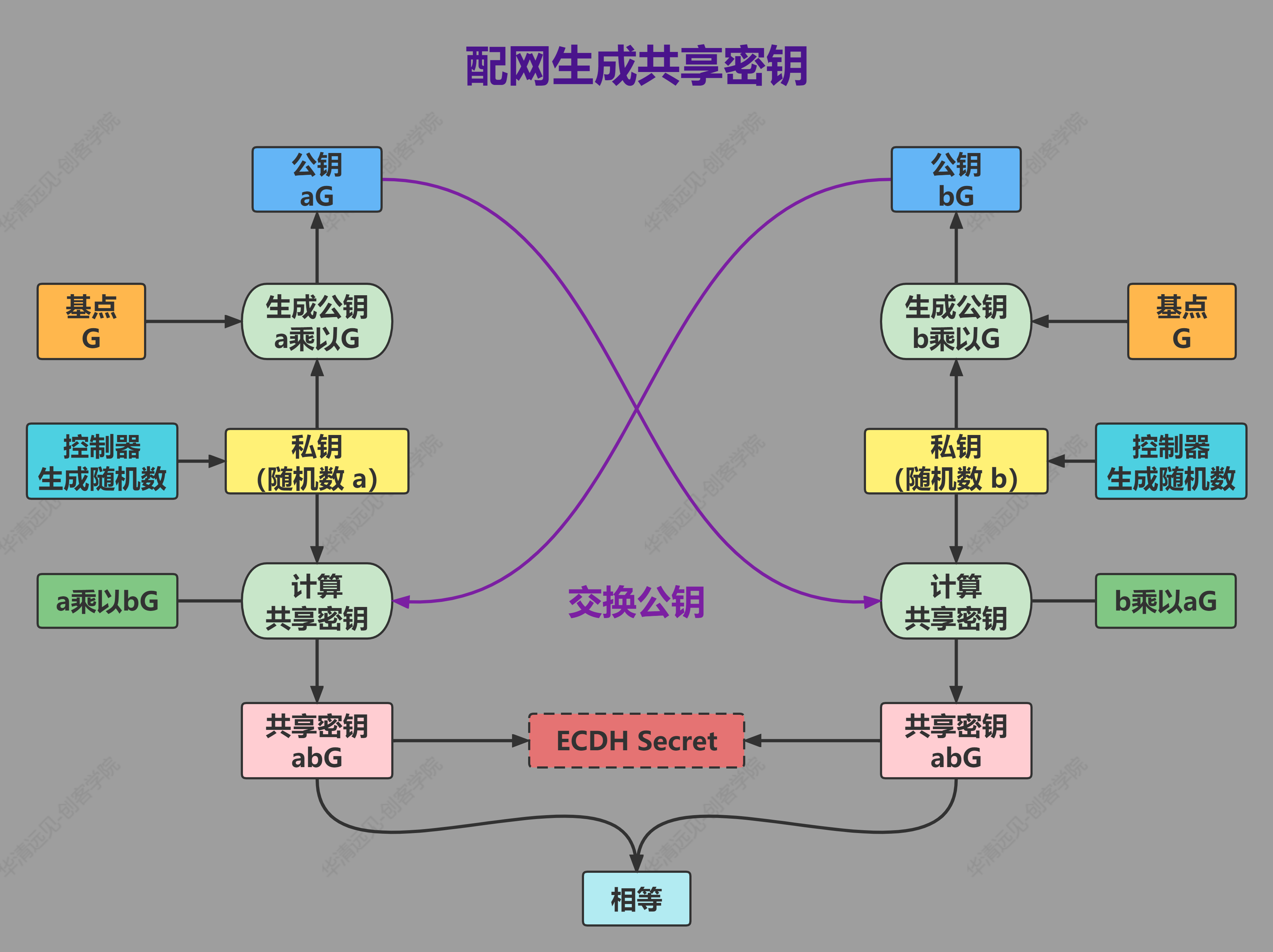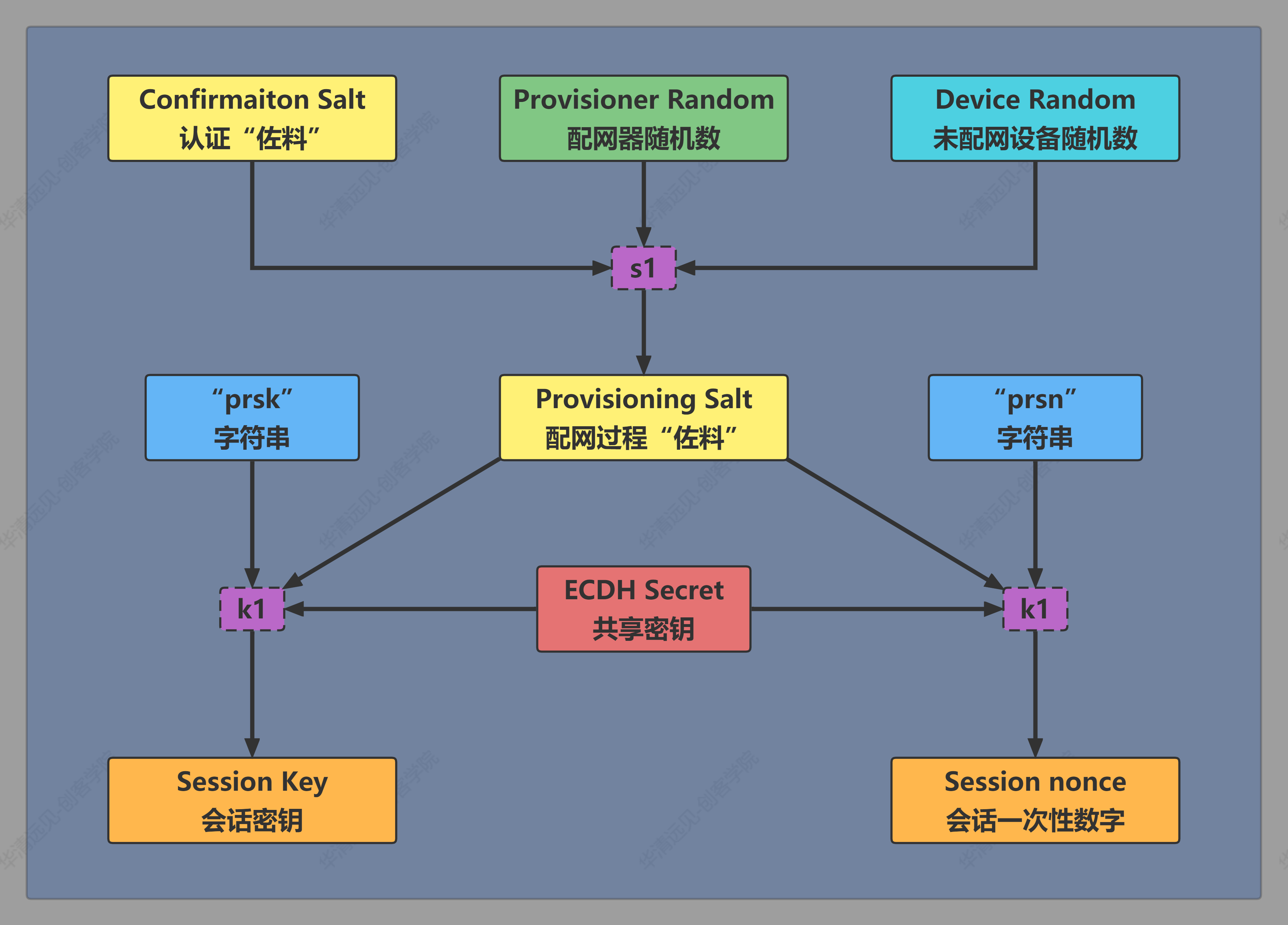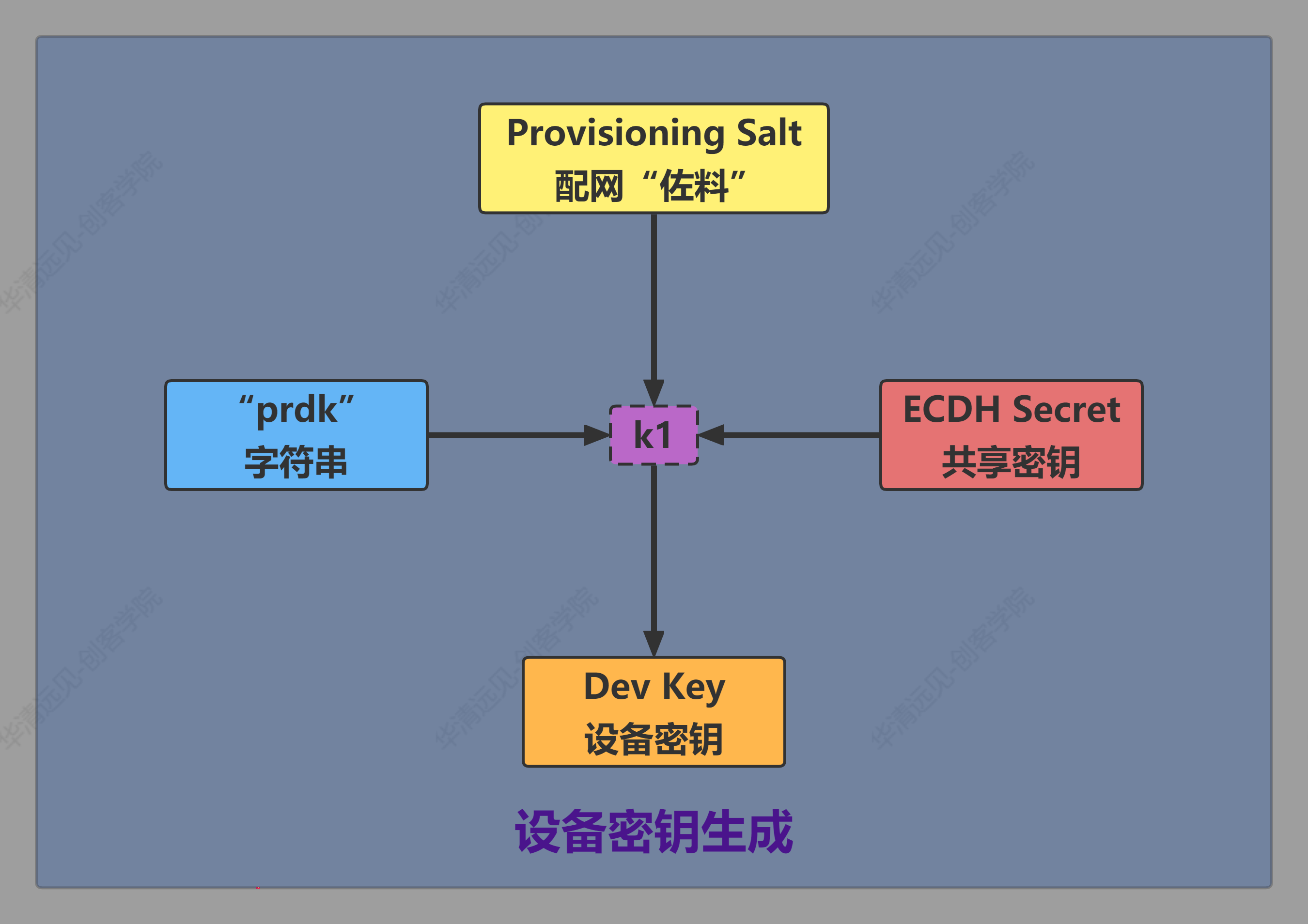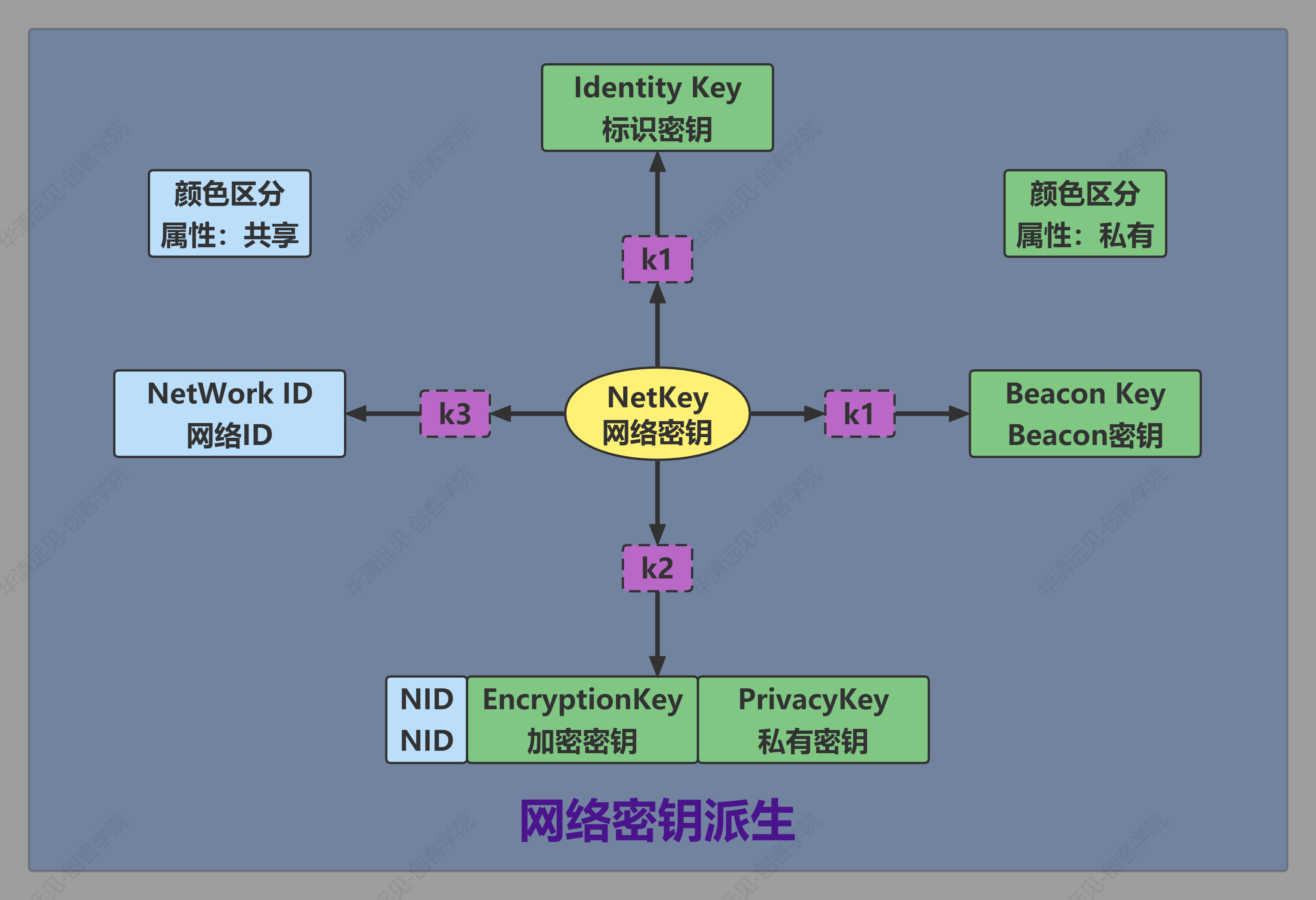LV04-天猫蓝牙Mesh项目-02-进阶开发-07-蓝牙Mesh密钥生成详解
本文主要是天猫蓝牙Mesh项目——进阶开发 蓝牙Mesh密钥生成详解 的相关笔记,若笔记中有错误或者不合适的地方,欢迎批评指正😃。
点击查看使用工具及版本
| Windows版本 | windows11 |
| Ubuntu版本 | Ubuntu22.04的64位版本 |
| VMware® Workstation 16 Pro | 16.2.3 build-19376536 |
| 终端软件 | MobaXterm(Professional Edition v23.0 Build 5042 (license)) |
点击查看本文参考资料
| 分类 | 网址 | 说明 |
| 官方网站 | 阿里云 | 阿里云官网主页 |
| 阿里生活物联平台 | 生活物联网平台(飞燕平台)主页 | |
| AliGenie | 天猫精灵开放平台AliGenie主页 | |
| 阿里物联网平台 | 阿里物联网平台主页 | |
| Bluetooth 技术网站 | 蓝牙协议规范什么的可以来这里找 | |
| Telink | Telink | Chips for a Smarter IoT (telink-semi.com) Telink中文官网 | |
| 开发手册 | AliOS Things开发指南 | AliOS Things开发指南,这里是最新版本,可以直接从官网找到 |
| AliOS Things开发指南 | AliOS Things应用开发指南,这里应该是3.3版本的完整开发文档 | |
| AliOS Things开发指南(3.0) | AliOS Things应用开发指南,这里应该是3.0版本的完整开发文档 | |
| 生活物联网平台开发文档 | 生活物联网平台(飞燕平台)开发文档 《设备端开发指南》 | |
| Wi-Fi IoT品类定义与功能开发 | 天猫精灵IoT开放平台——Wi-Fi IoT品类定义与功能开发 | |
| 硬件平台 | mk3080 WiFi开发板 | WiFi开发板使用指南-阿里云开发者社区 |
| esp8266开发板 | 一个教程:ESP8266-NodeMCU开发板详解-太极创客 (taichi-maker.com) | |
| TLSR8258 Datasheet | Datasheet for Telink BLE + IEEE802.15.4 MultiStandard Wireless SoC TLSR8258 | |
| 参考资料 | AliOS Things 3.0 应用开发指南 | 这个只是一篇参考文章,里面是一些环境搭建相关的,可以参考 |
| IP知识百科 - 华为 (huawei.com) | IP的一些相关知识点 |
点击查看相关文件下载
| 分类 | 网址 | 说明 |
| 蓝牙规范相关文档 | Core Specification 5.2 | 核心规格 5.2,该规范定义了创建可互操作的Bluetooth 设备所需的技术。 《Core_v5.2.pdf》 |
| Mesh Model(v1.1) | 本Bluetooth 规范定义了模型(以及它们所需的状态和消息),这些模型用于在mesh 网络中的节点上执行基本功能,超出了Bluetooth Mesh 配置文件 规范中定义的基础模型。 本规范包括定义跨设备类型标准功能的通用模型,以及支持关键mesh 场景的模型,如照明控制、传感器、时间和场景。 《MshMDL_v1.1.pdf》 | |
| Mesh Profile(v1.0.1) | 该Bluetooth 规范定义了基本要求,以实现可互操作的mesh 网络解决方案,用于Bluetooth 低能量无线技术。 《MshPRFv1.0.1.pdf》 | |
| Mesh Device Properties | 本规范包含Bluetooth Mesh 配置文件 和Bluetooth Mesh 模型规范所要求的设备属性的定义。 但是跟之前的有些区别,我主要看的之前的版本:《MMeshDeviceProperties_v1.2.pdf》 | |
| GATT Specification Supplement | GATT Specification Supplement | Bluetooth® Technology Website。 好像可以在线看:《GATT Specification Supplement》 | |
| Assigned Numbers | GATT的一些类型定义可以在这里找。 | |
| AliOS Things | alios-things/AliOS-Things | Gitee上的AliOSThings SDK源码仓库 |
| alibaba/AliOS-Things | GitHub上的AliOSThings SDK源码仓库 | |
| 天猫精灵蓝牙Mesh协议栈 | alibaba-archive/genie-bt-mesh-stack | GitHub上的天猫精灵蓝牙Mesh协议栈源码仓库。 之前是在alibaba/genie-bt-mesh-stack这个仓库。 写笔记的时候最新提交为faf523618a6a2560090fc423222b9db80984bb7a |
| 蓝牙Mesh设备开发指南 | 阿里云生活服务平台开发手册——蓝牙设备开发一节中的内容 |
这一LV的笔记起始跟前面有所重叠,互相补充吧算是。
一、各种密钥生成原理
1. 配网过程中的密钥
1.1 DHKey共享密钥

HCI中会有控制器生成随机数的命令,我们下发了对应的命令后,就会生成一个随机数。然后就可以用这个随机数作为一个“种子”去生成其他种类的密钥。在协议栈中,基点G是一个常量,双方都有,是一个公开的值。
1.2 认证
双方都通过Confirmation Key 、RandomDevice 和 Auth Value三个参数生成认证值。配网器生成随机数,然后通过认证密钥和AuthValue共同生成认证值,把认证值发给未配网设备,然后再发获得配网器的认证值保存下来,并进入到向配网器发送认证值阶段,发送认证值之前也要生成随机数,与认证密钥和AuthValue生成未配网设备认证值,并先进行认证值比较,如果相等,此时发送。

1.3 建立对话

2. 设备密钥
设备密钥是在配网过程中生成,只有节点和配置客户端知道的访问层密钥。设备密钥是一个特殊的应用密钥。

3. 应用密钥
应用密钥是通过控制器里的随机数生成器生成。应用密钥是配网器通过自己生成的随机数生成的。它用于加密上层传输层中的消息,如服务器模型与客户端模型绑定的应用密钥不一致,则无法进行通信。


4. 网络密钥
网络密钥是由控制器里的随机数生成器生成,占16个字节,用于加密网络层消息,具有相同网络密钥的节点视为同一网络。
- NetWork ID:占8个字节,NetWork ID来自于网络密钥,这样每个网络密钥就会生成一个网络ID。此标识符将成为公共信息。
- NID:占7个bit,用于标识用于保护此网络PDU,每个NID最多有2121个可能的密钥,用来标识验证此PDU的EncryptionKey 和 PrivacyKey。
- EncryptionKey:加密密钥,网络层传输数据时用的加密密钥,占16个字节。
- PrivacyKey:私有密钥,占16个字节。
- IdentityKey:标识密钥,占16个字节。用于支持GATT代理服务。
- BeaconKey:Beacon密钥来自于网络密钥,这样每个网络密钥就会生成一个Beacon密钥。

二、代码分析验证
1. mesh_crypto.h
文件路径:genie-bt-mesh-stack-master/network/bluetooth/bt_mesh/inc/mesh_crypto.h
1 | // 生成只能被使用一次的随机值 |
2. net.c
文件路径:genie-bt-mesh-stack-master/network/bluetooth/bt_mesh/src/net.c
1 | //网络密钥创建 |